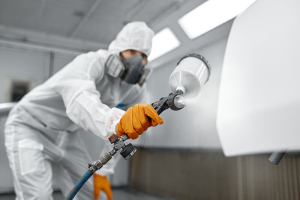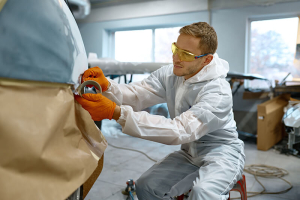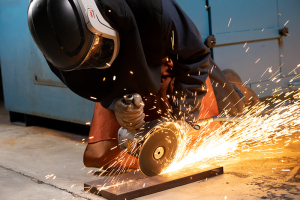Should You Be Using Smartphones On Job Sites?
Get The Safe, Hands-Free Communication You Need
With Smartphones, Hearing Protection
Communication is a critical part of creating a safe job site and is a core part of every worker's day.
Whether they're coordinating supplies, issuing warnings or getting direction for their project, it's important that workers can quickly and easily communicate. While radios are most commonly used on the job site, they come with several issues:
- Half-duplex – there is two-way communication, but only in one direction at a time
- Push-to-talk – in many systems, workers must press a button to begin talking
- Wires – many systems have wires connecting the microphone to the transceiver
These features slow down communication, and in some cases, can be disruptive to the worker because they require them to use one of their hands, taking it away from what they're working on. Additionally, the wires can get in the way of their current job.
Unlike radios, smartphones are duplex communication devices which allow both people to talk at the same time. When paired with a Bluetooth® wireless technology device, it's both wireless and hands-free.
By removing the wires, this becomes a much safer communication method for the workers to use on their job site.
So how else do smartphones improve communication on job sites?
Benefits Of Smartphones For Job Site Communication
Smartphones also allow project managers, leads or safety personnel to stay connected to the workers on the job site, monitoring their progress and offering aid if an issue arises.
For large or remote sites, it helps promote cross communication between workers at different locations and keeps them informed about the progress across the job site that may affect their own projects. Finally, smartphones are a great training tool which gives apprentices or trainees the ability to listen in to the communications between experienced workers.
Communication Devices That Offer Noise Protection
While technology plays a big role in communication, it's also critical that workers can hear and understand what's being communicated. Noisy work sites are one of the most pervasive occupational risks in the construction industry.
Three studies looked at the effect that noise has on workers. The University of Washington reviewed 1,300 construction site noise measurements and found that, depending on the trade, 70% of the workers were exposed to average noise levels above 85 decibels (dBA)1 – the occupational exposure limit recommended by both the National Institute for Occupational Safety and Health (NIOSH) and the American Conference of Governmental Industrial Hygienist (ACGIH).
Another research study found that construction workers wore hearing protection between 20-40% of the time when noise exposures exceeded 85 dBA2. A third study conducted in Washington found that, while construction workers made up 7% of the workforce, they accounted for 21% of hearing loss claims.
Solving The Issue With Communication-Enhanced Hearing Protection
To address both the need for two-way communication and hearing protection, many companies are using communication-enhanced hearing protection.
In order to be most effective on job sites, companies are looking for systems that are:
- Cost-effective
- Small
- Lightweight
- Hands-free
- Have a superior range of operation
- Compatible with required hearing protection
With these features, workers can communicate quickly and easily while also protecting their hearing. Using smartphones as the primary communication device takes advantage of a device they already carry and reduces the financial burden on the company to provide these devices.
By combining hearing protection and smartphones, you have a communication solution that is safe, reliable and cost-effective. And because workers are already used to carrying smartphones, they'll be more likely to use these devices in conjunction with their hearing protection. This approach promotes:
- Enhanced communication between remote workers
- Reduced chance of accidents
- Faster production
- The use of hearing protection among workers
There are many situations where this communication approach is beneficial. Take pile driving, for example – noise and distance impede communication between operator and observer. Or, consider workers in confined spaces where you may need simultaneous verbal communications and oversight between confined space entry workers, the entry attendant, entry supervisor and safety manager.
And by facilitating remote personnel's virtual presence on the job site it may also improve productivity and safety. As with all devices and work sites, the contractor should consider their site's specific work conditions and determine if the equipment can be used safely and is within OSHA or other applicable safety and health regulations.
By combining protection, communication and hands-free devices, you can promote safety and productivity on your work site.
See Why We're The Top Supplier For Industrial, Marine and Safety
30-Second Summary:
- ✔ Communication is a core component of a successful job site, and should be cost-effective, small, lightweight, hands-free, have a superior range of operation and be compatible with required hearing protection.
- ✔ While radios are common, smartphones are actually a better communications device.
- ✔ Smartphones can be easily used for two-way communication and don't have wires or require pushing a button to speak.
- ✔ They also can be combined with hearing protection, protecting workers on noisy job sites.









